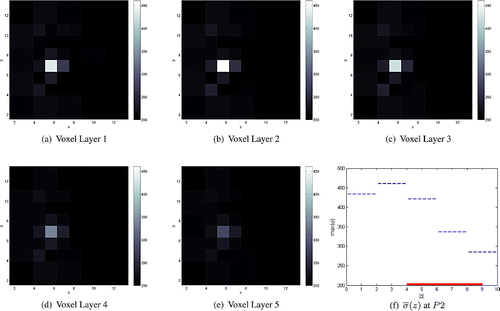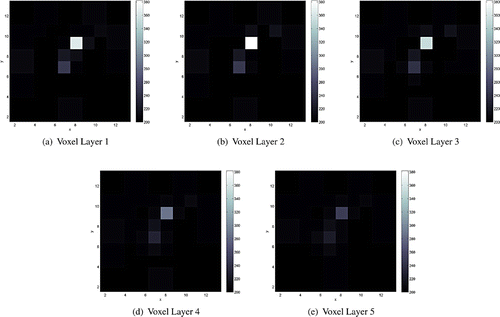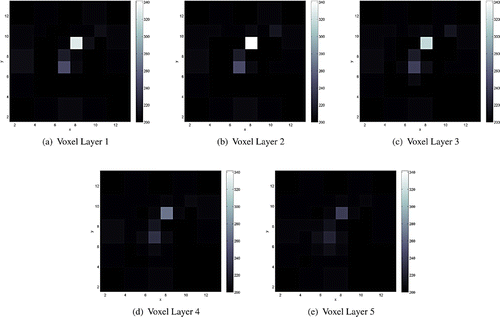Figures & data
Figure 1. Layout of the rectangular electrode array of the latest prototype developed at the University of Mainz in collaboration with Oxford Brookes University:
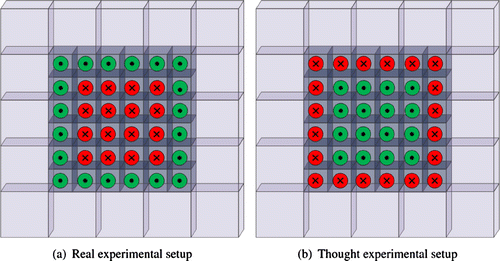
Figure 2. Voxel configuration: are the active electrodes, are the passive electrodes, and denote the positions in the xy-plane where inclusions were placed in our numerical simulations.

Figure 3. Conductivity reconstructions for a cylindrical object of radius of conductivity 800 mS/m placed at position P1 and
mm. The thick continuous line in (e) marks the position and the height of the inclusion along the z-axis.
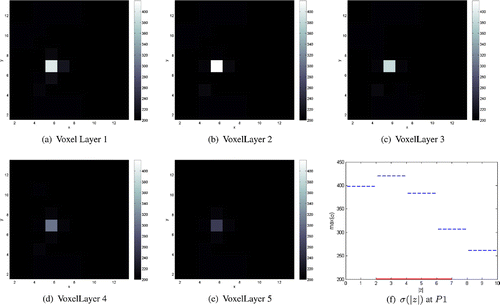
Figure 4. Conductivity reconstructions for a cylindrical object of radius of conductivity 800 mS/m placed at position P1 and
mm. The thick continuous line in (e) marks the position and the height of the inclusion along the z-axis.
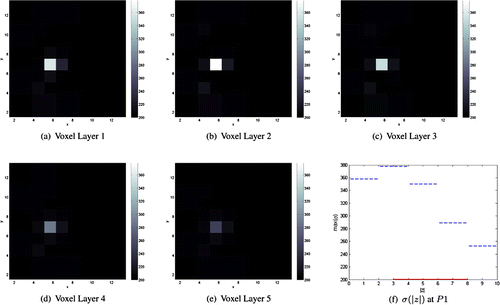
Figure 5. Conductivity reconstructions for a cylindrical object of radius of conductivity 800 mS/m placed at position P1 and
mm. The thick continuous line in (e) marks the position and the height of the inclusion along the z-axis.
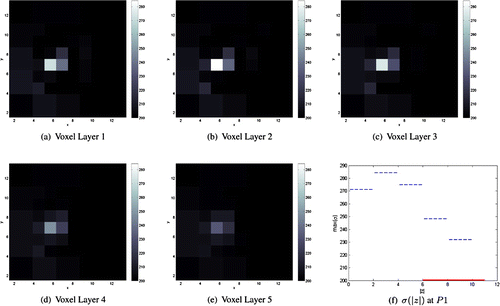
Figure 6. Conductivity reconstructions for a cylindrical object of radius of conductivity 800 mS/m placed at position P2 and
mm. The thick continuous line in (e) marks the position and the height of the inclusion along the z-axis.
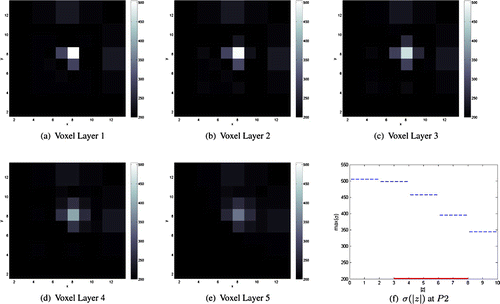
Figure 7. Conductivity reconstructions for a cylindrical object of radius of conductivity 800 mS/m placed at position P2 and
mm. The thick continuous line in (e) marks the position and the height of the inclusion along the z-axis.
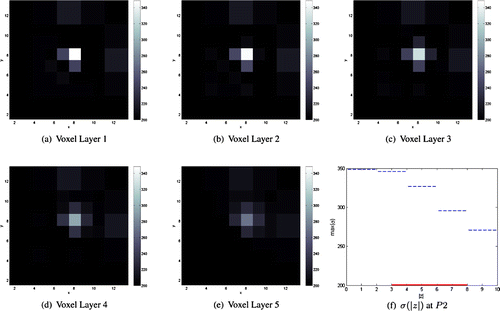
Figure 8. Conductivity reconstructions for a cylindrical object of radius of conductivity 800mS/m placed at position P2 and
mm. The thick continuous line in (e) marks the position and the height of the inclusion along the z-axis.
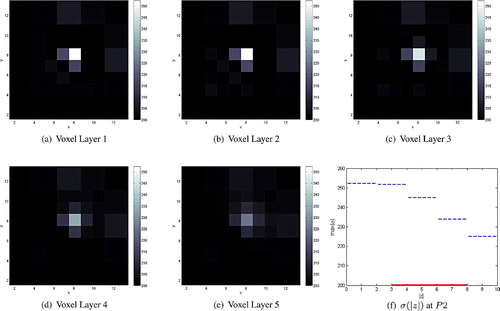
Figure 9. Conductivity reconstructions for a cylindrical object of radius of conductivity 800 mS/m placed at position P3 and
mm.
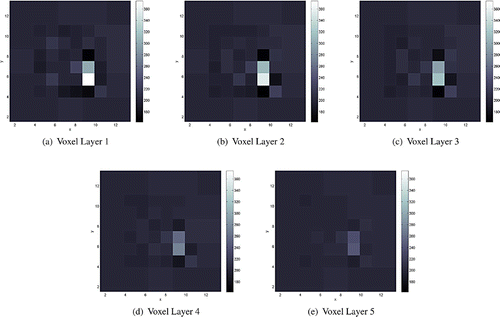
Figure 10. Conductivity reconstructions for a cylindrical object of radius of conductivity 800 mS/m placed at position P4 and
mm.
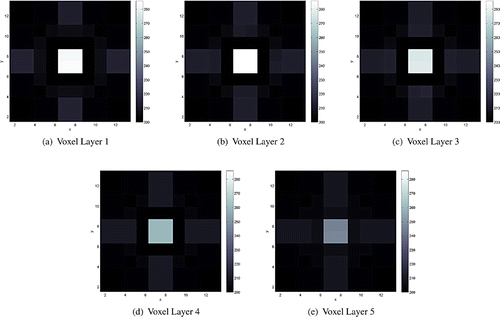
Figure 11. Conductivity reconstructions for a cylindrical object of radius of conductivity 800 mS/m placed at position P1 and
mm in the presence of a resistive medium (50 mS/m) in Voxel Layer 1. The thick continuous line in (e) marks the position and the height of the inclusion along the z-axis.
